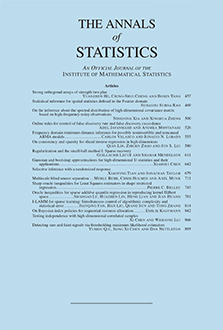Abstract
This article studies the estimation of the causal effect of a time-varying treatment on time-to-an-event or on some other continuously distributed outcome. The paper applies to the situation where treatment is repeatedly adapted to time-dependent patient characteristics. The treatment effect cannot be estimated by simply conditioning on these time-dependent patient characteristics, as they may themselves be indications of the treatment effect. This time-dependent confounding is common in observational studies. Robins [(1992) Biometrika 79 321–334, (1998b) Encyclopedia of Biostatistics 6 4372–4389] has proposed the so-called structural nested models to estimate treatment effects in the presence of time-dependent confounding. In this article we provide a conceptual framework and formalization for structural nested models in continuous time. We show that the resulting estimators are consistent and asymptotically normal. Moreover, as conjectured in Robins [(1998b) Encyclopedia of Biostatistics 6 4372–4389], a test for whether treatment affects the outcome of interest can be performed without specifying a model for treatment effect. We illustrate the ideas in this article with an example.
Citation
Judith J. Lok. "Statistical modeling of causal effects in continuous time." Ann. Statist. 36 (3) 1464 - 1507, June 2008. https://doi.org/10.1214/009053607000000820
Information





